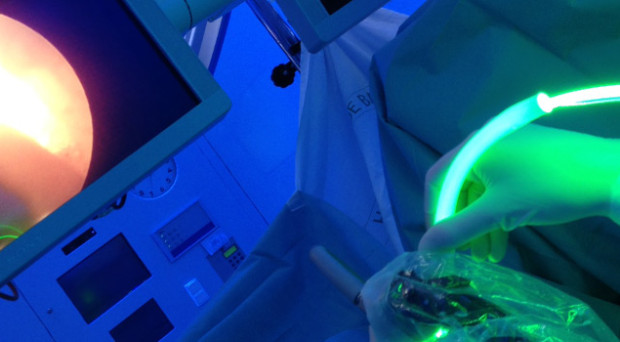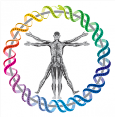
5.30 AM. The alarm goes off early this morning. I am hosting a live webinar about social media for members of the European Association of Urology (EAU) from 6-7am EST (12-1pm CET). Social media is increasingly used in our field, and the EAU has set up a series of webinars to educate urologists on its use in clinical and academic practice.
8 AM. This morning is allocated to research. It begins with a conference call with my collaborators from the National Prostate Cancer Register of Sweden. This registry is a comprehensive data source which we have been using to study patterns of prostate cancer management. Our latest data shows that as of 2013, an impressive 78% of very low risk patients in Sweden received active surveillance rather than immediate treatment. This is encouraging and should serve as a benchmark for other countries in our effort to reduce overtreatment of low-risk prostate cancer.
9 AM. I meet with my research team here at New York University (NYU). I have a grant from the National Cancer Institute to study active surveillance for prostate cancer. We spend the morning running sensitivity analyses for our mathematical model.
12 PM. Clinic begins and my first patient is Jack*, a 60 year old who was referred for an elevated prostate-specific antigen (PSA) of 11 ng/ml. This was discovered 2 weeks ago when he went to urgent care for a urinary tract infection. He does not recall any previous PSA tests. He has finished antibiotics and today’s urine dipstick test is negative. I tell Jack that the PSA reading is not reliable due to his urinary tract infection, and so we schedule him for a repeat measurement and follow-up visit in a few weeks.
There is very clear evidence from the European Randomized Study of Screening for Prostate Cancer (ERSPC) that PSA screening reduces advanced disease and prostate cancer death. However, in order to achieve these benefits and to avoid undue harm, we must use the test in the right patients at the right time.
I educate Jill that smoking is a known cause of bladder cancer, and advise her to quit smoking
1 PM. The next patient is Jill*, a 65 year old woman with a 20 pack-year smoking history whose primary care physician found microscopic blood in the urine. She had a CT urogram that was unremarkable and is here today for cystoscopy. I insert a flexible cystoscope via the urethra into her bladder. I show Jill where the ureters enter the bladder and what the normal bladder mucosa looks like.
Fortunately we do not find any tumors, and Jill is relieved that her workup came out negative. I educate Jill that smoking is a known cause of bladder cancer, and advise her to quit smoking. She will follow up with another urinalysis in one year.
2 PM. My next patient is Joe*, a 62 year old man who is currently on active surveillance for prostate cancer. He was diagnosed last year with low-risk disease. His PSA is stable at 7 ng/ml. However, a recent MRI shows a highly suspicious lesion (PI-RADS 5) at the right base of the prostate. He presents today for surveillance biopsy. Using local anesthetic, I perform his biopsy in the clinic including 12 systematic biopsy cores and 3 additional cores targeted at the suspicious lesion. The procedure is well-tolerated and he will follow-up next week to discuss the results.
3 PM. The next patient is a 35 year old man named James*, who recently went to the emergency department with right flank pain. CT scan showed a small 3mm stone in the right distal ureter. James was discharged with pain medication and Flomax. He passed his stone a few days later. I send his stone for analysis and order labs to check for metabolic risk factors. James is motivated to avoid future stones so I educate him about general dietary recommendations for stone prevention, including drinking more water, avoiding excess salt and animal protein.
6-8 PM. After seeing several more patients in clinic, I head to the radio studio. On Wednesday nights, I host the Men’s Health Show on Sirius XM, the satellite radio provider covering the entire US and Canada. My guests tonight include the authors of new studies on prostate cancer and erectile dysfunction.
11PM. My flight departs for Rome, Italy. I am lecturing tomorrow on prostate cancer screening updates at a large international meeting. In the past a single PSA threshold was used to trigger prostate biopsy for everyone.
I will talk about nomograms and multivariable risk calculators, such as the Rotterdam Prostate Cancer Risk Calculator, that are increasingly being used to provide each patient with a personalized estimate of their risk for significant prostate cancer. New tests such as the Prostate Health Index and magnetic resonance imaging are further improving risk stratification.
How did you get into urology?
While I was in medical school, my grandfather died from prostate cancer. Shortly after his death, I attended a lecture on prostate cancer by Dr Misop Han and contacted him about research opportunities. Previously I was not familiar with the field of urology. Little did I know that it would become my future career. It has now been 10 years since I first started doing prostate cancer research with Drs Han and Catalona, which continues to this day.
On the clinical side, I enjoy the wide array of problems that urologists treat, and all of the neat gadgets used for urological surgery, such as ureteroscopes, lasers, artificial urinary sphincters, and penile prostheses.
Why do you think social media is important in urology?
I have been using Twitter for 3 years and find it extremely useful for research updates, professional networking, education and advocacy
I have been using Twitter for 3 years and find it extremely useful for research updates, professional networking, education and advocacy. All of the major urology conferences have their own twitter feed with hundreds of participants and thousands of contributions. The EAU guidelines are now being disseminated through regularly scheduled social media posts, and there is even a monthly international urology journal club on twitter.
What are the biggest challenges about working in this field?
As with the rest of medicine, the burden of paperwork has increased dramatically. The cost of medical education is increasing and professional fees are generally declining. The United States is a litigious society and recent statistics showed that the vast majority of urologists had been sued, at least once, by age 65. On the research side, funding is becoming increasingly scarce and competitive. Significant reforms are needed in all of these areas to ensure continued scientific progress in the fight against disease, and to avoid significant physician workforce shortages in the future.
What’s the most important thing you think non-specialists should know about urology?
[urology] is a dynamic field, and there is really something for everyone
Medical students who are considering urology should know that it is a dynamic field, and there is really something for everyone. Whether you prefer adult or pediatric patients, major surgery or office procedures, clinical work or research, there are a multitude of possibilities. For other physicians, here are 3 key tips on common issues that we see in practice:
1) Healthy men with at least a 10 year life expectancy should be told about the pros/cons of PSA screening so that they can make their own decision. Do not check PSA during a urinary tract infection.
2) The diagnosis of microscopic hematuria requires the identification of red blood cells on urine microscopy. Urine dipstick alone is not sufficient.
3) Erectile dysfunction may be the harbinger of cardiovascular disease.
* The cases described are hypothetical to reflect typical urology cases.
 BMC Medicine‘s Spotlight on prostate cancer article collection, guest edited by Sigrid Carlsson and Andrew Vickers, is now open for submissions. If you have any research you would like us to consider for inclusion in this article collection, please email us at bmcmedicineeditorial@biomedcentral.com.
BMC Medicine‘s Spotlight on prostate cancer article collection, guest edited by Sigrid Carlsson and Andrew Vickers, is now open for submissions. If you have any research you would like us to consider for inclusion in this article collection, please email us at bmcmedicineeditorial@biomedcentral.com.
3 Comments